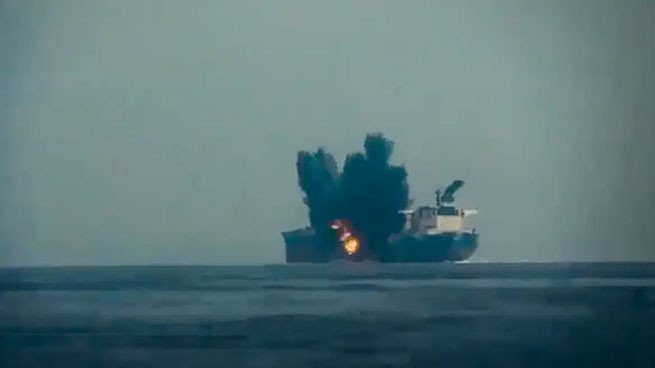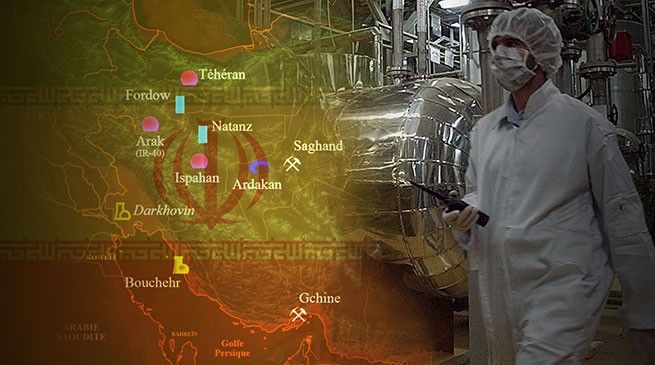After missile strikeattack on Israel on Tuesday (1/10), there is growing concern that Tel Aviv will try to hit attack on Iran's nuclear facilities.
In response to Israeli threats to strike Iranian nuclear reactors or oil fields, the Iranians have already made it clear that, in addition to American bases in Eastern Europe, they will strike Israeli gas rigs in the Mediterranean Sea that exploit the Leviathan and Tamar fields. As a result, production was stopped by the decision of the American Chevron. Reuters shows some of Iran's main nuclear facilities.
Iran's nuclear program covers many sites. Although the threat of Israeli airstrikes has loomed over the country for decades, few of its facilities are built underground.
The United States and UN nuclear watchdog believe Iran had a coordinated secret nuclear weapons program that was stopped in 2003. The Islamic Republic denies it ever had such weapons or plans to acquire them.
Iran agreed to curb its nuclear activities in exchange for relief from international sanctions as part of a 2015 deal with world powers. That pact fell apart following the departure of then-U.S. President Donald Trump in 2018, and Iran began rolling back restrictions the following year.
Iran has since expanded its uranium enrichment program, cutting the so-called “fission time” needed to produce enough weapons-grade uranium to build a nuclear bomb to a matter of weeks from at least a year under the 2015 deal.
It will take longer to create a bomb from this material. Exactly how much is less clear and is a matter of debate. Iran is currently enriching uranium to 60%, close to the 90% needed to produce nuclear weapons, at two sites. And theoretically has enough material enriched to that level to create nearly four bombs, according to the International Atomic Energy Agency (IAEA), a UN watchdog.
Nuclear facilities at Natanz – uhIt is the main site of Iran's uranium enrichment program and is monitored by inspectors from the International Atomic Energy Agency (IAEA), the UN nuclear energy watchdog. They are located in the desert outside the Shiite Muslim holy city of Qom, south of Tehran. Natanz is home to two uranium enrichment plants: Huge underground fuel enrichment plant (FEP) and above ground pilot fuel enrichment plant (PFEP).
In 2002, members of the Iranian opposition in exile revealed that Iran was secretly building Natanz, sparking a diplomatic standoff between the West and Iran over its nuclear intentions that continues to this day.
The FEP was built to enrich uranium on a commercial scale and was designed to accommodate 50,000 centrifuges. Today there are about 14,000 centrifuges installed there, of which about 11,000 are operational, enriching uranium to 5% purity. Diplomats familiar with operations at Natanz describe the FEP as located approximately three floors underground. There has long been debate about how much damage Israeli airstrikes could cause.
Centrifuges at FEP have been damaged in other ways, including an explosion and power outage in April 2021 that Iran believes was an Israeli attack.
The Fordo Fuel Enrichment Plant is an Iranian underground uranium enrichment facility located 20 miles northeast of the Iranian city of Qom, near the village of Fordo, on a former Islamic Revolutionary Guard Corps base. Because it is dug into a mountain, it is considered to be better protected from possible bombing than the FEP.
A 2015 agreement with major powers prevented Iran from beginning the enrichment process at the site. There are now more than 1,000 centrifuges operating there, some of them modern IR-6s, capable of enriching uranium to 60%, close to the level needed to create nuclear weapons. In addition, Iran recently doubled the number of centrifuges installed at the plant, with all new centrifuges being IR-6 units.
In 2009, the US, UK and France said Iran had been secretly building Fordo for years and had not informed the IAEA about it. US President Barack Obama then said: “Iran is one of the most dangerous states. The size and configuration of this facility does not correspond to the peace program.”
On the outskirts of Isfahan, Iran's second largest city, lies a major nuclear technology center. It includes a fuel plate fabrication plant (FPFP) and a uranium conversion facility (UCF), which can convert uranium into uranium hexafluoride. Isfahan has facilities to produce uranium metal, a process that is particularly sensitive as it could be used to make the core of a nuclear bomb.
Iran has a heavy water research reactor, originally called Arak and now called Khondab. These reactors pose a proliferation risk because they can easily produce plutonium, which, like enriched uranium, can be used in atomic bombs.
Iran agreed to shut down the reactor at Arak, about 250 kilometers southwest of Tehran, under a 2015 deal. Foreign powers that signed the agreement said the plant could eventually produce plutonium, which could also be used in atomic bombs. However, Iran is allowed to produce a limited amount of heavy water, and Tehran is working to redesign the reactor. Tehran says it will produce isotopes for medical and agricultural needs.
Iranian nuclear research centers in Tehran include research reactor. The only one Iran's operating nuclear power plantlocated on the Persian Gulf coast, uses Russian fuel, which Russia takes back when it is used up to prevent Tehran from enriching uranium.
From the author. The presence in power of Israel, a country with a large arsenal of nuclear weapons, of such an inadequate personality as Netanyahu poses a much greater risk for peace in the region than the creation of one or even several uranium bombs by Iran. Moreover, Israel has dozens of thermonuclear charges in its arsenal, which are an order of magnitude more powerful than uranium bombs.
If Iran's nuclear facilities are damaged in the region, an environmental disaster will occur, as the explosion will spread and disperse tens of tons of uranium and other radioactive substances into the air, creating new “Chernobyls”…







More Stories
In the US, there is outrage over the decision of J. Biden and C. Harris to donate… $750 to hurricane victims "Helen"
S. Balaskas about the gypsies: “We will bring them blood, we will enter their houses”
Greeks lost more than 40 billion euros to banks